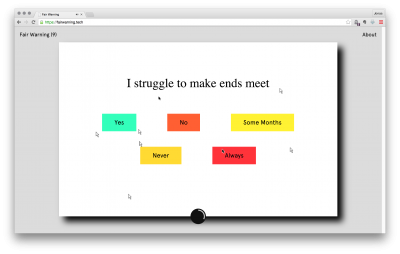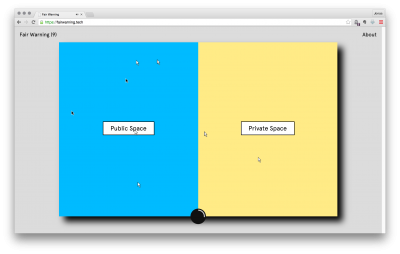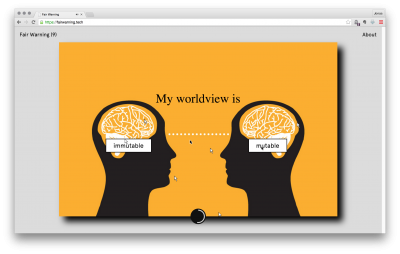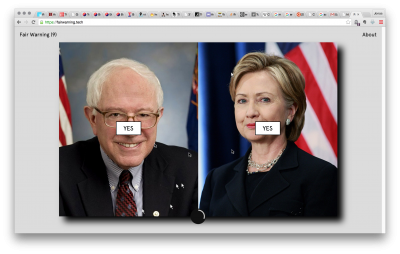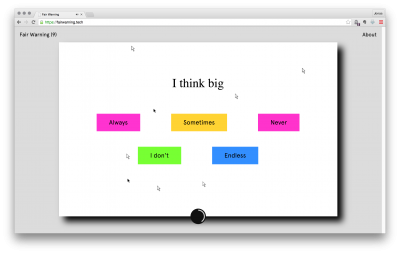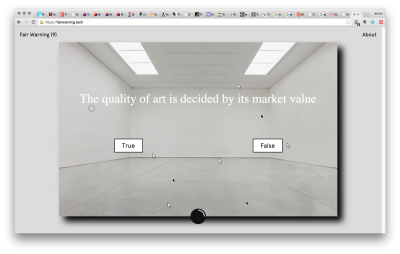 Jonas Lund, Fair Warning (2016), Installation View at Whitechapel Gallery. Photo: Stephen White
Jonas Lund, Fair Warning (2016), Installation View at Whitechapel Gallery. Photo: Stephen White
Fair Warning
Whitechapel Gallery & Phillips
7 April – 12 June 2016
We live in a world where “in some sense, almost everything we see can be construed in multiple ways. As a result, we are constantly choosing between duck and rabbit.
Van Bavel in “How Your Brain Decides Without You”
Every part of our daily lives is being measured and evaluated — either voluntarily while we are aware or hidden behind mechanisms in an opaque manner. These metrics come to represent unbiased truth, the foundation and justification for all decision making. It is the science behind seemingly random patterns and flows of information. While statisticians and big data prophets swear by the value of quantification, there is room to question the efficiency and bias it creates in its path. Within the valuation of contemporary art, the desire for quantification poses a set of problems. It’s very difficult to measure the quality of art beyond an auction or market specified value. In a society obsessed with quantification and metrics of evaluation, how can the greater cultural value of art be justified and funded if it can’t be measured or quantified until it is sold?
Fair Warning is a series of test environments installed on the websites of Whitechapel Gallery and Phillips. These test environments aim to discover, measure and quantify taste profiles of the contemporary art audience. A series of rapidly changing tests, from simple questionnaires to visual comparison tests, are used to quantify and measure taste — personal preference as it relates to the general. The results are distilled to relationships between hype mechanisms and value creation within the contemporary art world. Fair Warning attempts to both embrace the quantification strategies used to influence opinion and to demystify the usefulness of such data. Can and should everything be measured and quantified? What is altered in the process of becoming aware of such information?
Coinciding with the exhibition Electronic Superhighway (2016-1966), Swedish artist Jonas Lund (b. 1984) presents a new online work titled Fair Warning (2016).
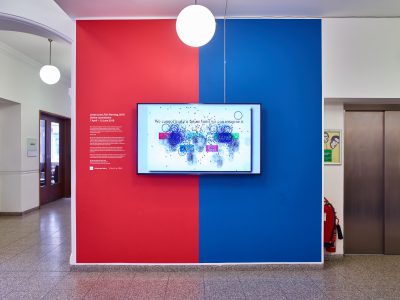 Jonas Lund, Fair Warning (2016), Installation View at Whitechapel Gallery. Photo: Stephen White
Jonas Lund, Fair Warning (2016), Installation View at Whitechapel Gallery. Photo: Stephen White
Jointly commissioned by the Whitechapel Gallery and Phillips, Fair Warning (2016) encourages viewers to participate by responding to a series of over 300 questions which range from colour preferences, politics and emotions to the latest trends in the art world. Playing with our expectations of traditional online questionnaires or personality tests, it examines the value and use of data collection when attempting to represent user tastes and asks whether an objective way of measuring the value of art exists.
Hosted on both the Whitechapel Gallery and Phillips’ websites, Fair Warning both embraces and attempts to demystify website analytics and testing tools, as the clicks and cursors of all users can be seen when engaging with the work.
To interact with the work, click on one or several answers for each question. Answer as few or as many questions as you like. If you choose not to answer, the next question will load automatically. The whole test can last up to an hour, and then repeats itself.
 Jonas Lund, Fair Warning (2016), Installation View at Whitechapel Gallery. Photo: Stephen White
Jonas Lund, Fair Warning (2016), Installation View at Whitechapel Gallery. Photo: Stephen White

